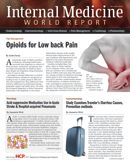Study Examines Traveler's Diarrhea Causes, Prevention Methods
A review published in JAMA in January explored several factors surrounding traveler's diarrhea, a condition commonly encountered by people voyaging from a high-income to a lower- or middle-income country

A review published in JAMA in January explored several factors surrounding traveler’s diarrhea, a condition commonly encountered by people voyaging from a high-income to a lower- or middle-income country.
Robert Steffen, MD from the Epidemiology, Biostatistics, and Prevention Institute at University of Zurich in Switzerland and his colleagues originally gathered 2976 articles which focused on traveler’s diarrhea. However, only 37 of those studies were included in the review, and were analyzed along with 85 articles identified by the authors.
In doing so, the investigators highlighted several trends involving traveler’s diarrhea background, risk factors, causes, prevention, and treatment. For their study, the researchers defined the ailment as 3 of more abnormal stools and one additional symptom (eg abdominal pain) occurring in a 24-hour span. Typically, the symptoms last anywhere from 4 to 5 days.
Furthermore, the authors asserted people on cruise ships were less likely to experience an upset stomach. However, travelers exposed to a norovirus in this environment are more likely to spread it.
“Seasonal variations exist for the risk of traveler’s diarrhea, with lower rates occurring in winter; in Mexico, traveler’s diarrhea risk increases with warmer temperatures and greater rainfall,” the authors also cited as a risk factor.
Moreover, the writers claimed a majority of diarrhea occurrences are caused by bacterial enteropathogens, though these pathogens are to blame for only 15% of endemic diarrhea cases among people in their native country.
The authors also debunked the boiling and cooking of contaminated food as an adequate measure to prevent diarrhea. Using synbiotics, prebiotics, and probiotics was also deemed problematic as there was no strong data to back that these medications are effective at treating diarrhea, and that they are not intended to be used in this manner.
While researchers recommended prioritizing rectifying the dehydration which comes with diarrhea — especially among the elderly and infants — they mentioned the self-treatment of mild symptoms has been successful.
“When symptoms are mild (1-3 loose stools per 24 hours with or without mild enteric symptoms and activities not affected), treatment is usually effective with a non-antibiotic agent such as bismuth subsalicylate or the antimotility agent loperamide,” they noted. “These are commercially available in packets and can be made up with bottled water by a traveler who becomes ill.”
Although many strides have been taken to decrease the effects of traveler’s diarrhea, the investigators asserted more must be done to curb the condition’s prevalence and impact. Concluding their study, they urged for antimicrobial remedies’ advantages to be analyzed in more detail, given gradual changes to the public’s pathogenic vulnerabilities.
